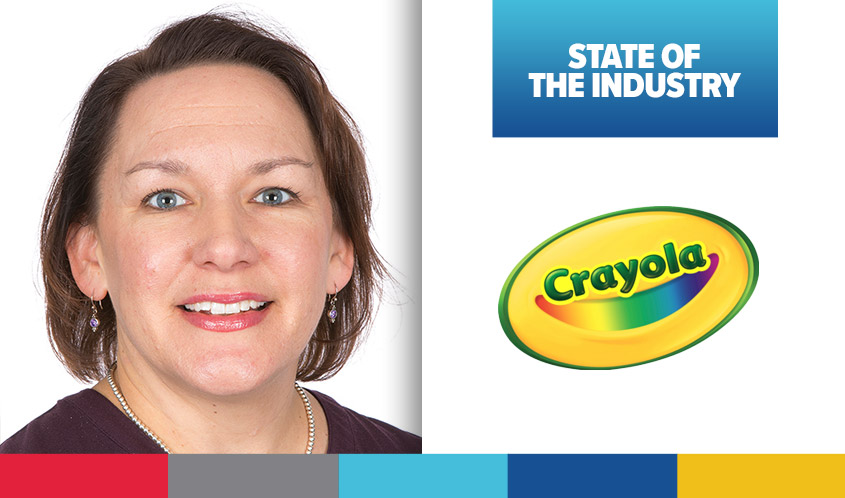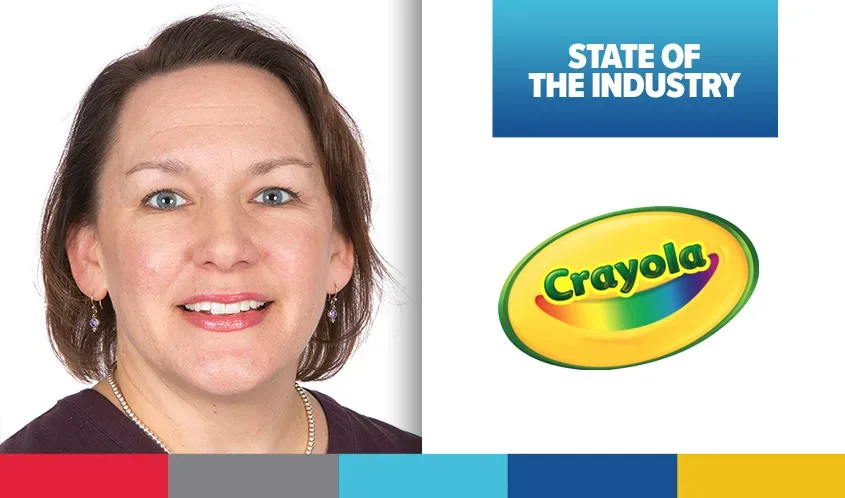
Kim Rompilla, executive vice president of global marketing development and activation at Crayola, talks about the company’s solutions to supply shortages in the Toy Book’s annual State of the Industry Q&A.
The Toy Book: How did your company mitigate the effects of the supply chain disruptions? Did your products arrive on time?
KR: As a brand, Crayola has a legacy of innovation. It has been amazing to see our teams galvanize company-wide and innovate in completely new ways to navigate the supply chain disruptions and logistics challenges throughout 2021. Early in the pandemic, collaboration and transparent communication became cornerstones to mitigating risks. Not every product was on time, but as The NPD Group category dynamics show, Crayola delivered to the market in a big way. Category, shopper, and consumer insights were used to frame anticipated consumer demand shifts.
Partnerships with key retailers were incredible, with clearly aligned priorities early on guiding plans to deliver a strong holiday season. Strong relationships throughout the supply chain enabled us to mitigate risks in unprecedented ways, even as consumer demand continued to climb throughout disruptions during the year. Deep retailer and supplier partnerships have always been key to our operating rhythm, and those relationships fueled strong collaboration, which ultimately yielded minimal disruption to products arriving on time.
Leveraging Crayola’s diversified supply base to realize close-to-market responsiveness and rapid replenishment of high-demand products around the world were staples of Crayola’s operating model. Research and development teams worked with procurement and manufacturing for contingency options on challenged materials. Merchandising and operations teams developed alternative approaches to executing displays for retail partners. Sales worked tirelessly with retail partners to identify products challenged to hit timelines and explore substitute products as alternatives. Early planning was the catalyst to so much great work, starting with an all-hands-on-deck approach in 2020. As labor market shortages escalated, salaried office personnel pitched in for a brief time to help with manufacturing work for U.S.-based operations. That can-do approach carried over in 2021 with collaboration across sales, operations, marketing, and finance to constantly evaluate changing priorities and deliver products.
TB: What are your predictions for the state of toy retail in 2022?
KR: Toy retail has endured the impact of the pandemic now for two years. While making predictions has proven to be challenging, there is hope that there is some stabilization in 2022. Some pandemic impacts will live on as part of the new normal. Mid-pandemic living pushed many families to get creative on how they live their lives, with a need for more at-home play, family time, and creativity; all of which will continue. Innovations will be needed for families to continue to stay creative and stay connected.
This article was originally published in the February 2022 edition of the Toy Book. Click here to read the full issue!

